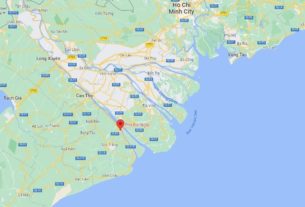Building service engineering in Thailand may grow 8% in 2019
10 April 2019
THE engineering sector that builds utility systems for electricity, plumbing and ventilation is showing signs of reaching up to 8 per cent growth this year above 2018.
The mechanical and electrical (M&E) servicing sector, or building service engineering could reach Bt185 billion this year, according to research by Siam Commercial Bank Economic Intelligence Centre or SCBEIC released yesterday.
EIC foresees the industry in 2019 benefiting from a positive construction momentum, both from public and private projects. Meanwhile, in the medium term (2020-2022), the M&E industry is projected to experience 4 per cent constant growth.
Building service engineering is an important part of the construction business, valued as high as 12-15 per cent of the total construction market. A typical construction project consists of three main areas of work – civil engineering, mechanical and electrical and architectural/interior work.
In 2018, Thailand’s construction industry, including both public and private construction, was valued at Bt1.3 trillion with expected growth of 6 per cent throughout the medium term (2019-2022). The benefits of a positive outlook in Thailand’s construction business goes beyond civil engineering contractors, reaching related businesses including M&E. The three main M&E services are electrical, plumbing and HVAC systems, making up 6-8 per cent, 3-5 per cent and 3-5 per cent of the total construction market, respectively.
M&E works can be operated in parallel with the main structural works once the initial structural work, such as the foundation, is completed. Therefore, revenue recognition for M&E contractors usually occurs during the latter half of the construction project.
Going forward, the M&E industry will be driven mainly by the growth of construction projects from both public and private sectors. In 2019, The M&E work in private construction accounts for 75-80 per cent of the total M&E market, valued at approximately Bt140 billion, with opportunities for 5 per cent growth in the medium term.
Positive private construction outlooks stem from prospects of new buildings, such as office and residential projects. For office buildings, new supply is expected, as the current occupancy rates are as high as 90 per cent. As for residential projects, large developers are eyeing new mixed-used projects with anticipated high returns, coupled with the continuing trends of condominiums built along the electric train route
In contrast, the M&E work in public construction this year accounts for only 20-25 per cent of the total M&E market, valued at approximately Bt45 billion.
Though public construction reaps only a small portion of the M&E market, its growth potential is higher than private M&E construction. The public M&E construction market is forecast to grow by 6 per cent in the medium term, driven by various megaproject initiatives such as airports, seaports, and electric/double-track stations.
These megaprojects will need investments of more than Bt200-400 billion per year throughout the medium term, the report noted.
Source: https://www.nationmultimedia.com/detail/Corporate/30367420


